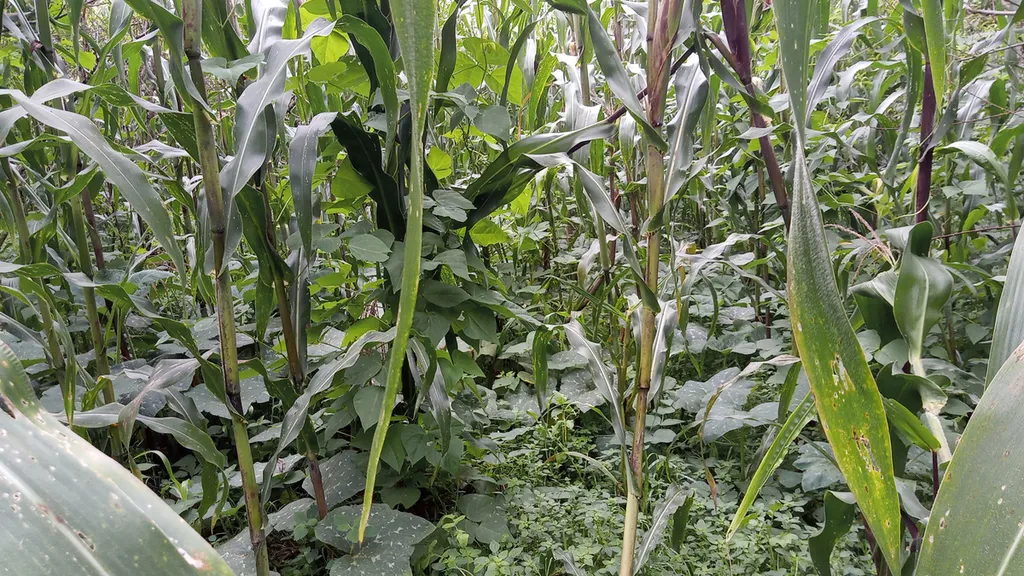In the dense, moist landscapes of tropical and subtropical regions, a humble herbaceous plant, Eclipta alba, often goes unnoticed. Known locally as Bhringaraj, Karisilakanni, or keshut, this unassuming plant harbors a secret that could revolutionize agriculture and potentially impact the energy sector. A recent study, led by Nabanita Chakraborty from the Agricultural and Ecological Research Unit at the Indian Statistical Institute, has uncovered the allelopathic potential of E. alba’s root exudates, opening doors to innovative applications in farming and beyond.
Eclipta alba, with its soft, sessile stem and extensive growth, has long been recognized for its medicinal properties. However, its invasive nature and the intense allelopathic activity it exhibits in diverse topologies have piqued the interest of researchers. Allelopathy, the biological term for chemical interactions between plants, including inhibition of germination and growth, could hold the key to natural, eco-friendly agricultural solutions.
Chakraborty’s study, published in the Annals of Tropical Research, focuses on the root exudates of E. alba. Root exudates are substances released by plant roots into the rhizosphere, the soil region influenced by root secretions and associated microorganisms. These exudates can have significant effects on soil microbial communities and plant growth.
The research team found that amongst the major solvent extracts from the roots, the methanol fraction exhibited significant antimicrobial activity against a range of microbes. This finding is particularly noteworthy as it suggests that E. alba could be a natural resource for combating plant pathogens, reducing the need for synthetic pesticides and fertilizers.
Moreover, bioassays conducted on crop germination revealed that the root exudates of E. alba could enhance agricultural productivity. “The experimental findings inferred statistical significance at the 0.001 level,” Chakraborty noted, emphasizing the robustness of the results. This implies that E. alba’s root exudates could be harnessed to develop natural fertilizers, promoting sustainable agriculture practices.
The implications of this research extend beyond the agricultural sector. In the energy sector, the development of bio-based products from plant exudates could contribute to the creation of renewable and sustainable resources. For instance, the antimicrobial properties of E. alba’s root exudates could be utilized in the production of bio-based antimicrobial coatings for energy infrastructure, enhancing durability and reducing maintenance costs.
Furthermore, the use of natural allelochemicals could mitigate environmental impacts associated with conventional agricultural practices. By reducing the reliance on synthetic chemicals, E. alba’s root exudates could help lower greenhouse gas emissions and promote biodiversity, aligning with global efforts to combat climate change.
As the world grapples with the challenges of sustainable development, the findings of Chakraborty’s study offer a glimmer of hope. The potential applications of E. alba’s root exudates in agriculture and the energy sector underscore the importance of exploring natural resources for innovative solutions. “This research validates the practical implications of E. alba’s allelopathic activity,” Chakraborty stated, highlighting the transformative potential of this unassuming plant.
In the quest for sustainable and eco-friendly practices, Eclipta alba stands as a testament to the untapped potential of nature’s bounty. As researchers delve deeper into the allelopathic properties of this humble herb, the future of agriculture and the energy sector could be forever changed, one root exudate at a time.

